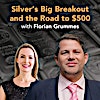Gold and inflation
Statistics
When it comes to investing, or to understanding an economy, one must not be so quick to take statistics at face value. In the reporting of inflation rates, for example, official numbers given by a government bureau might be adjusted downward, or at least do not fully show the effect of increasing money supply.
In Singapore, for 2012, consumer prices went up 4.6%, which itself is rather high compared to recent years. We contend, however, that focus should be not on prices per se, but on how much cash is circulating, as well as how much is in other instruments such as bank savings accounts.
The country’s M1 (currency in circulation and demand deposits), at the beginning of 2012, was at S$130.43 billion. This increased to S$144.98 billion, or by 11.16%, much greater than 4.6%. The rise in M1 does not manifest in consumer prices right away, but the money has already entered the system and will affect prices over time.
The gold price
Consumer prices may have not been rising too much in the past decade, but some of the increase in money supply is reflected in gold’s fivefold increase during the same period.
Over the past year, gold has been floating within a range in the lower S$2,000s per ounce. One might ask: is the current situation a sign that the bull market in gold is over, or is this a mere correction like any other, that also makes for an excellent buying opportunity?
We should note that there have been similar corrections over the 10-year period in which gold has risen upwards. This rise in price of gold is indicative of how much monetary inflation is actually going on, not just in Singapore but worldwide. This is in spite of consumer prices appearing to be relatively stable.
Even though it may now not be reflected in official price indexes, price increases will eventually come. Currency money could not stay stored in banks forever.
Cash shifting to precious metals
With currency depreciation as early as the present, there is less and less incentive for institutions to hold money as reserves for feeble interest. Such money will eventually go to ‘real’ things whose exchange value does not diminish in the market: commodities, which will then rise in price. This is a world phenomenon, taking into account the monetary inflation occurring in jurisdictions that have been far less successful than Singapore in achieving a stable currency.
Among commodities, for purposes of wealth protection, are precious metals, gold, silver and platinum. These remain durable and easily divisible, not to mention rare, which make them ideal for preserving one’s purchasing power.








